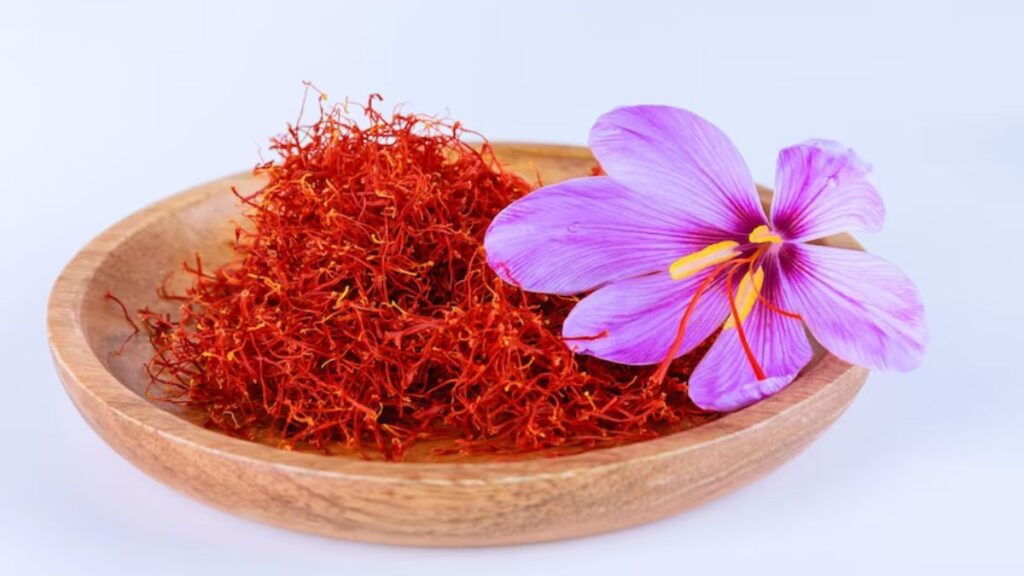Saffron, also known as “Red Gold,” is a highly valued spice with a long and varied history. This article provides a comprehensive look at saffron, discussing its history, cultivation, culinary uses, medicinal benefits, and economic impact.
Contents
- What is Saffron?
- History of Saffron
- Cultivation and Harvesting
- Saffron Culinary Uses
- Medicinal Properties of Saffron
- Saffron in Traditional Medicine
- Saffron in Perfumery
- The Saffron Trade
- Saffron and the Economy
- The Challenges of Saffron Production
- Quality Grading of Saffron
- Cooking with Saffron: Tips and Recipes
- Conclusion
- FAQs
What is Saffron?
The dried stigmas of the Crocus sativus flower are processed into the spice known as saff’ron. Its bright red hue, unique flavor, and pleasant aroma have made it famous. The price of saff’ron is often compared to that of gold because of its rarity and high demand.
History of Saffron
Saff’ron has been used for over 3,000 years. It was probably developed in what is today Iran. Saff’ron has played a significant role in various ancient civilizations, including the Greeks, Romans, and Egyptians, who used it in culinary, medicinal, and religious practises.
Cultivation and Harvesting
Growing saff’ron is a laborious process that requires a lot of time and attention to detail. The Crocus sativus flower does best in areas with cold, snowy winters and hot, dry summers. Saff’ron threads, also known as stigmas, are painstakingly collected by hand during the brief flowering season.
Saffron Culinary Uses
Saff’ron is highly sought after all over the world due to its unique flavour and vibrant colour. It is frequently found in soups, stews and even sweets like rice pudding. The spice adds a distinctive flavour and aroma to food.
Medicinal Properties of Saffron
Saff’ron has been used medicinally for a very long time. It’s possible that its antioxidant and anti-inflammatory compounds will improve health. Saff’ron has recently gained attention for its potential beneficial effects on depression, anxiety, and even eye health.
Saffron in Traditional Medicine
Saff’ron healing properties have been utilized by numerous cultures for centuries. Asthma, insomnia, and gastrointestinal issues are just some of the conditions that have benefited from its application. Saff’ron has long been revered as a panacea in traditional medicine.
Saffron in Perfumery
Because of its distinctive aroma, saff’ron is a prized component in many perfumes. Its alluring aroma has made it a popular ingredient in perfumes because it enhances the other scent notes.
The Saffron Trade
The saff’ron trade has a global reach, with major producers including Iran, India, and Spain. The spice is shipped all over the world, enriching cuisines and fostering economic growth.
Saffron and the Economy
The economic health of saff’ron-growing regions is profoundly affected by the crop. Numerous people and communities rely on the money and jobs it brings in, so it’s crucial.
The Challenges of Saffron Production
Saffron is a valuable crop, but it is vulnerable to things like climate change, pests, and diseases. To guarantee a steady and high-quality supply of saffron, producers need to fix these problems.
Quality Grading of Saffron
Color, scent, and flavor are used to determine the quality of saff’ron. The best saff’ron will be bright red in color, have a powerful aroma, and have a robust flavor. The best possible product gets to the consumer thanks to quality grading.
Cooking with Saffron: Tips and Recipes
There are suggestions and recipes for making the most of the expensive spice saff’ron in your kitchen experiments. Saff’ron can be used in a wide variety of dishes, from rice to desserts.
Conclusion
The “Red Gold,” saff’ron, is used for far more than just seasoning. It embodies centuries of human creativity in the kitchen, culture, and cuisine. Saff’ron is a rare gem among spices thanks to its delicious aroma and versatile applications.
ALSO READ: HEALTHY LIFE: ACHIEVING WELL-BEING THROUGH WELLHEALTHORGANIC
FAQs
1. Is saffron the most expensive spice in the world?
Saff’ron is the most expensive spice, and its price per gramme is comparable to that of gold.
2. How is saffron used in traditional medicine?
Mood disorders, digestive issues, and respiratory conditions are just some of the conditions that saff’ron has been used to treat in traditional medicine.
3. Which countries are the largest producers of saffron?
Iran, India, and Spain are the three largest producers of saff’ron in the world.
4. Can saffron be grown in home gardens?
Saff’ron can be grown in home gardens, but only with the right climate and attention.
5. What gives saffron its unique flavor and aroma?
Crocus sativus flowers contain the compounds safranal and Picrocroci in their stigmas, which are responsible for the distinctive flavor and aroma of saff’ron.

